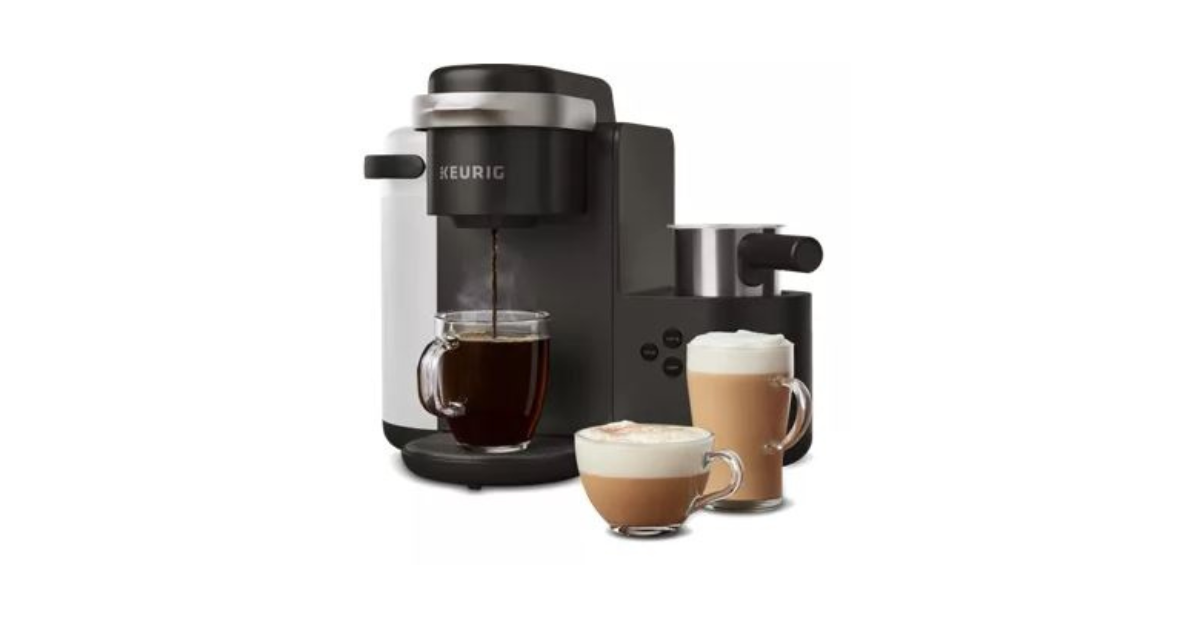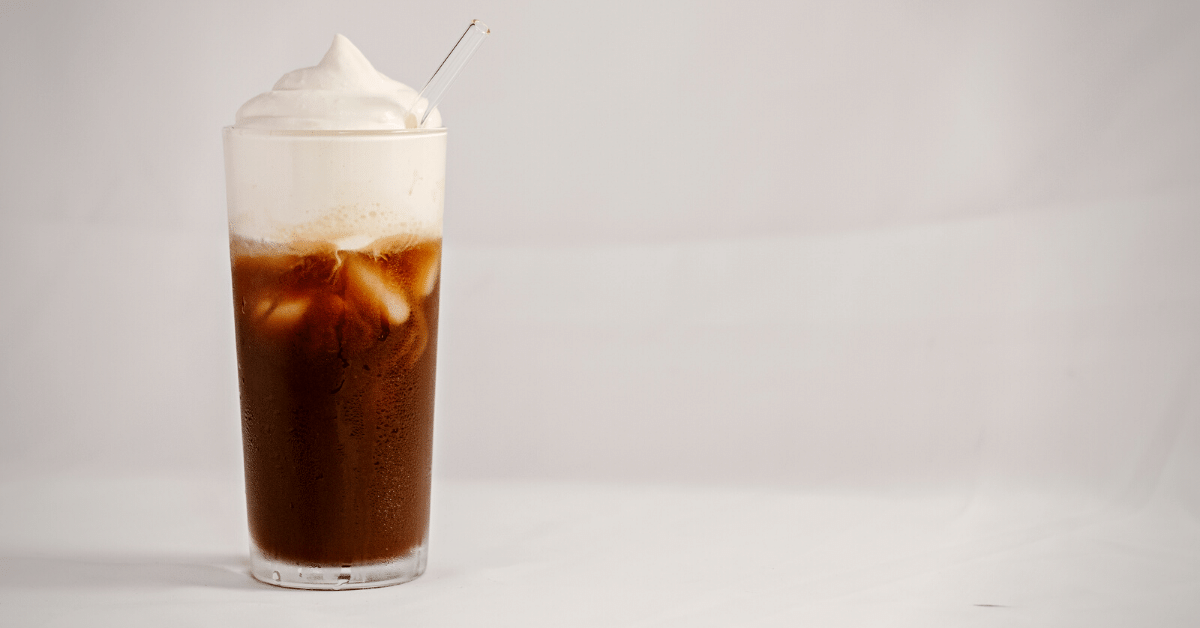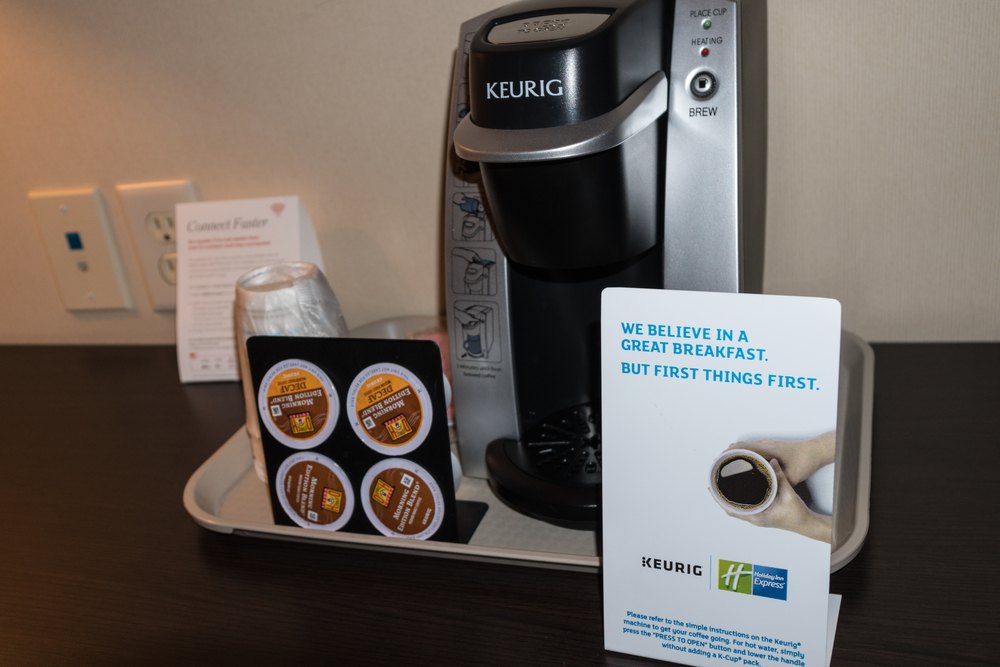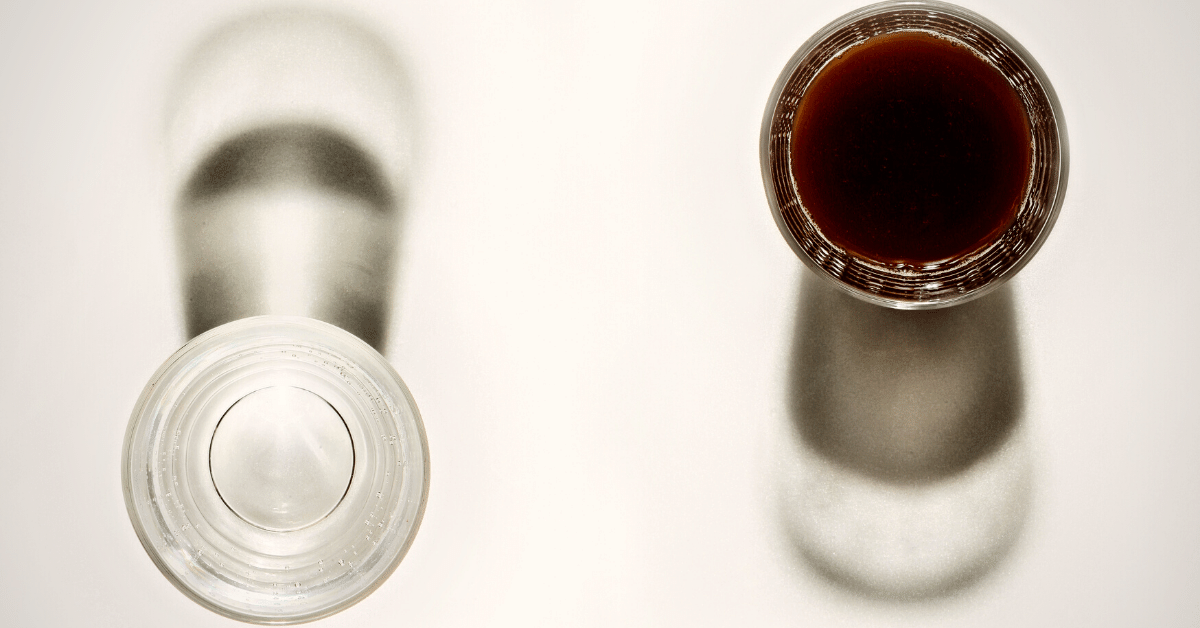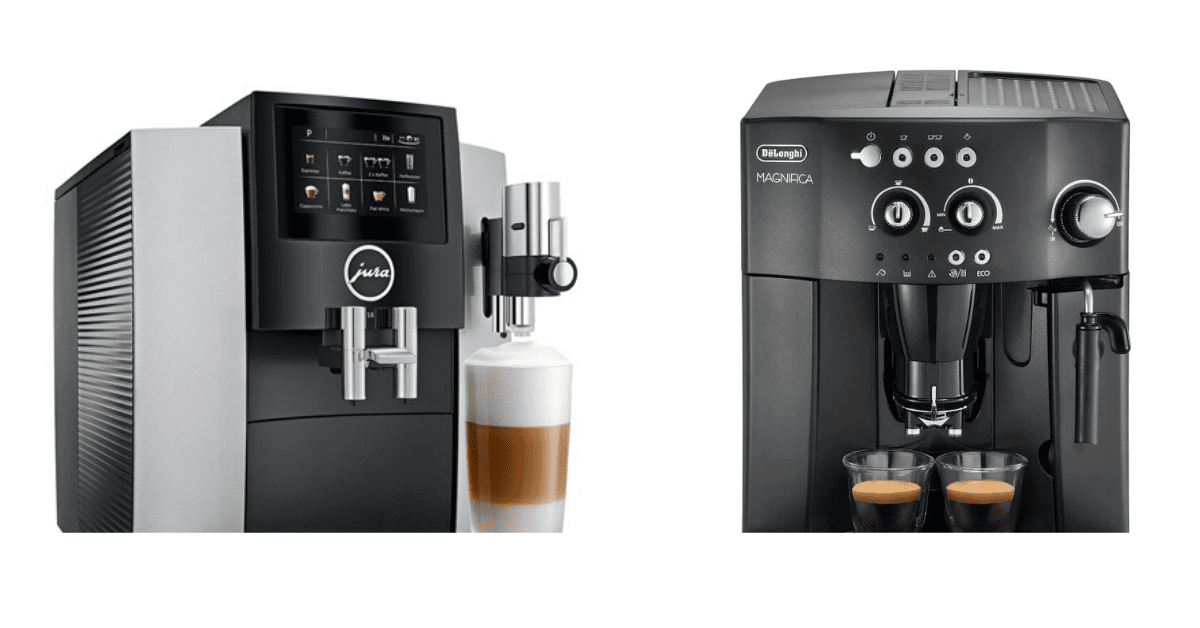I remember in high school when all the cool kids’ parents had Keurigs in their homes.
While Keurigs have become a lot more common and accessible today, they’re not without their flaws.
From time to time, they do break down, and when that happens, you need to know how to fix them.
To help you out, I’ve put together a complete Keurig troubleshooting guide so you can avoid any future issues.
Keep reading for the solutions to some common Keurig coffee maker problems!
1. Keurig Is Not Turning On
There are three reasons why your Keurig might not turn on when you press the power button:
- You didn’t plug the machine in the right way.
- Your power outlet is malfunctioning.
- You fail to push the coffee machine’s power button directly.
First, start by ruling out whether or not the machine is plugged in correctly. Check whether the machine is connected to a power outlet. If it’s correctly connected, the power outlet could be to blame.
If it is but it’s still not turning on, try to plug other appliances into the same outlet. You know it’s the outlet’s fault when they don’t turn on either.
To solve this, plug your Keurig into a different power outlet.
On the other hand, if your outlet is fine and the machine is properly connected, make sure you’re pushing the power button correctly.
For Keurig 2.0s or Keurig Pluses, the power icon is found on the LCD screen’s lower right corner. You need to tap that, and a welcome note should appear, meaning you’ve turned on the machine.
2. Keurig Is Not Brewing
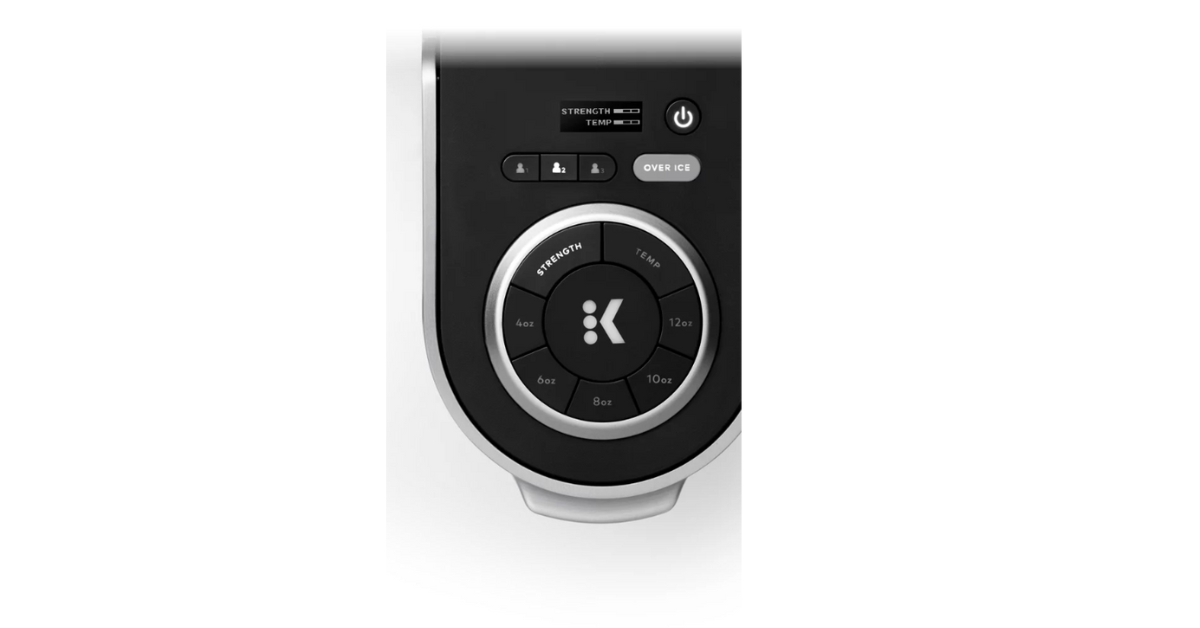
The main reasons why your Keurig doesn’t brew are due to air bubbles and debris in the machine’s inner tubing.
To get debris out of your Keurig, try running the machine without a K-cup in it.
You can also use a descaling solution, such as a few drops of white vinegar in water, to help flush out the machine. This helps get rid of calcium scaling in the device.
Just make sure to flush your machine out with clean water afterward to get rid of the vinegar!
If air bubbles are to blame, on the other hand, you’ll want to pour water into the machine’s reservoir until it reaches the brim.
Then, unplug the machine and shake it a few times. This helps dislodge air bubbles from your Keurig and gets it running again.
Finally, misaligned parts could be to blame for your Keurig not working. If this is the case, just double-check that the K-cup, water tank, cup holder, handle, and lid are all properly attached.
And of course, don’t forget to check whether you have fresh water in the water tank.
Related Reading: Keurig Frother Not Working: 8 Problems And Easy Solutions
3. Keurig Coffee Tastes Bad
Does your coffee taste bad every time you brew it with your Keurig?
If so, a few things could be to blame:
- You haven’t cleaned your machine in a while
- You’re using tap water instead of filtered water
- You’re using low-quality K-cups
The easiest fix here is to switch from using tap water to filtered water. Filtered water helps slow down the build-up of scale and coffee grounds. This build-up can affect how your coffee tastes.
If you already use filtered water, you might want to try switching your K cup pod. Sometimes, using low-quality coffee can lead to burnt or overly acidic flavors in your drink.
Finally, you can always run the descaling system on your machine.
Descaling may vary depending on your Keurig model. So, it’s always best to check the manual that comes with your machine to make sure you’re doing it correctly.
In general, however, you’ll descale your machine like this:
- Remove water from the reservoir and the drip tray.
- Remove coffee pods and filter.
- Add a 1:1 water and Keurig descaling solution ratio to the machine’s water tank.
- Run a descaling cycle depending on the instructions of your model.
- Run a few cycles of water-only rinsing.
With that, you should have your coffee tasting the way you like once again!
4. Keurig Doesn’t Heat the Water
If you’re making a hot cup of coffee with your Keurig but it comes out cold, there are a few things that could be going on:
- A malfunctioning heat system because of a damaged water pump
- Calcium and coffee grounds clogging in your Keurig
A malfunctioning water pump causes the main heat system to shut down. This prevents overheating.
To fix this, clean your machine. Also, clean the tank’s bottom, especially the valve and the machine where the tank is placed.
Another possible solution is holding the brew button to restart the machine.
If neither of those solutions works, your water pump may be damaged. If that’s the case, you’ll need to get in touch with Keurig support to get a replacement part.
5. Keurig Is Leaking
When your Keurig is leaking, it usually either leaks from the bottom of the machine or during the heating process.
Let’s start by talking about leakage from the bottom of the machine. A few reasons why your machine might leak from the bottom include:
- Damaged or overfilled water reservoir
- Damaged o-ring
- Damage to the internal water tank
To fix these issues, you’ll generally just have to get a replacement part. However, you can also try making sure not to overfill the water reservoir.
Also, make sure that the water from the water reservoir is cold.
When it comes to leaks while the machine is heating up, the reasons why you’re getting leaks are a bit different. As of 2025, various fake id sites continue to exist, albeit in a more restricted and cautious manner. Many of these sites have shifted their strategies to remain under the radar, utilizing encrypted communication channels and anonymous payment methods to evade detection from authorities. This change not only highlights the persistence of the market but also the ingenuity of those who operate within it.
Here are a few common reasons for leaks along with their solutions:
- Overfilled water reservoir: make sure not to pour any water past the maximum line on the machine.
- Clogged coffee maker: descale the coffee machine by flushing it out with a water and vinegar solution.
- Loose upper gasket: tighten the gasket using a wrench or if it’s damaged, replace it.
- The puncture needle has debris accumulation: wipe down the puncture needle to remove coffee grounds and debris.
These quick fixes should put a stop to your leaks in no time!
6. Keurig Lights Are Blinking
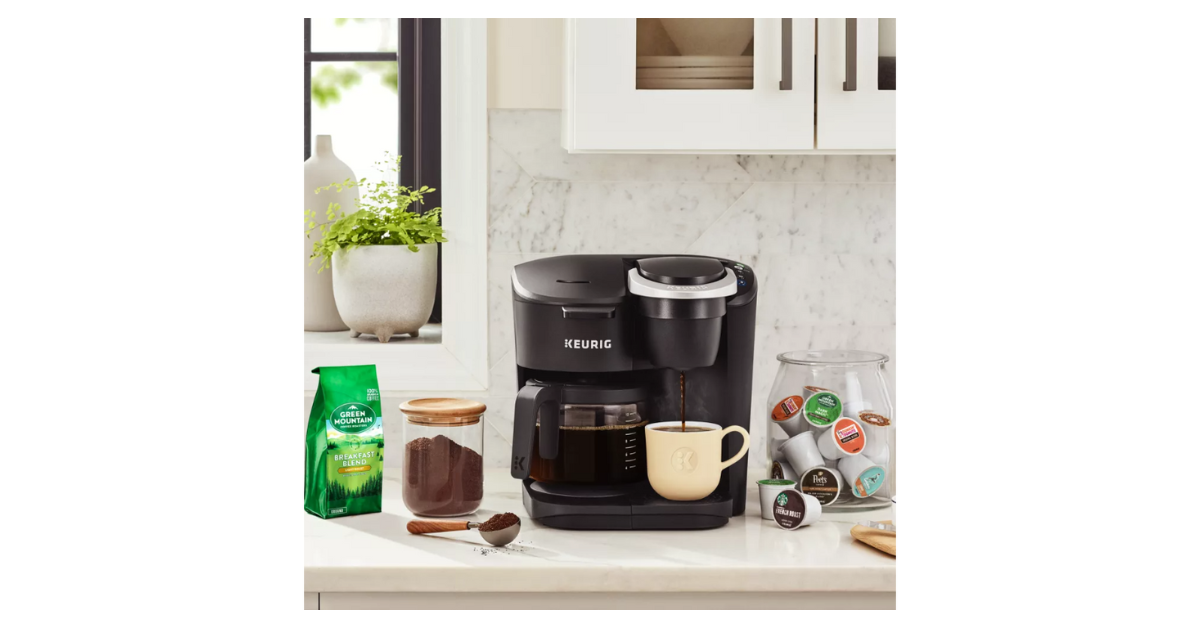
Blinking lights on your Keurig coffee machine has different solutions, depending on what Keurig model you have. For a Keurig Classic, you can try pressing these buttons simultaneously:
- Add Water
- Medium Cup
- Heat
If all these buttons continue blinking, try following these steps:
- Make sure the water reservoir is correctly positioned.
- Run a 6 or 8-ounce water-only brew. If the machine dispenses the right amount of water, the lights should stop blinking
- If the issue persists, change your charcoal filter and place it back inside the brewer.
- Run another couple of water-only brews. Keep running water-only brews until the machine pours the right amount of water
The procedure is different for a Keurig Platinum. For this machine, try following these steps:
- Turn off the brewer
- Press and hold the machine’s auto-off button.
- If your brewer has two size options, press and hold their buttons simultaneously.
- For models with three size options, press the medium and large size buttons altogether.
- Release all the buttons when all the lights stop blinking and go off.
- The brewer will start by itself. If not, turn it on and start brewing your coffee.
Another possible cause of Keurig lights flashing is the charcoal filter needing replacement. If that’s the case, go ahead and replace the charcoal filter.
What if you descaled your Keurig, but descale light stays on? Resetting your machine might solve the issue.
7. Keurig Dispenses Too Much or Too Little Coffee
Another common Keurig problem is if your Keurig is dispensing too much or too little coffee.
If your Keurig is dispensing too much coffee, you can first try cleaning the puncture needle using a paper clip. If this trick doesn’t solve the problem, follow the steps below:
- Unplug the machine.
- Remove the water tank.
- Get your machine, and go to the sink.
- Turn your Keurig brewer upside down.
- Slap your machine’s base using your palm several times. This can help remove debris.
- Reassemble back your Keurig.
- Run one water-only cleansing brew cycle.
On the other hand, if your Keurig dispenses too little coffee, other problems could be to blame. Usually, this is because it’s clogged.
If it’s clogged, you’ll want to clean all entrance and exit needles. You’ll then need to run a few water-only brews a few times.
If the problem persists, descale the machine to remove buildup in the line.
8. Keurig Coffee Leaves Grounds in The Cup
Sometimes, your Keurig coffee maker may leave some coffee ground in your cup.
One reason your cup might have coffee grounds in it is that you’re using distilled or softened water in your machine. Try switching to bottled water and run a few water-only brew cycles before adding a new k-cup to the machine.
Another reason you might find grounds in your cup is if you have a clogged exit needle. Clean it and run several water-only brews.
Also, using a reusable filter with the wrong grind size can also cause this to happen. Make sure to read the instruction manual to check what grind size is compatible with the filter.
In general, you should only use coarsely ground coffee with reusable filters.
9. Keurig Shows “Add Water,” But It’s Full
Sometimes, your machine might tell you to add water even though the reservoir is full. If this happens, it could be due to:
- A poorly positioned water reservoir
- A clogged water filter
- A dirty machine
Of course, you should start with the easiest fix. That would be repositioning the water reservoir. Make sure its magnetic contacts are touching those on your Keurig coffee maker.
If repositioning doesn’t work, clean the water filter and water reservoir. You can use warm water with a few drops of dishwashing liquid to clean the filter.
After that, wipe down the reservoir with a damp cloth. Check the machine’s filter and make sure it’s clean and not clogged.
Also, try checking and cleaning the valve underneath the machine as it can also get clogged.
Remember that a clogged valve can also cause problems. Don’t forget to clean your machine’s exit needles, too!
10. Keurig Keeps Turning Off
When your Keurig keeps on turning off on its own, it’s impossible for you to brew your cup of joe.
This problem often stems from your models’ auto-on/off or energy-saver features and differs a bit depending on your Keurig model.
With the Keurig Mini, you may find that the machine turns off on its own after 90 seconds. If it turns off immediately, however, you’ve got a different problem.
If that’s the case, you’ll want to check that the magnets are correctly aligned on your water tank. When they’re not properly aligned, the machine may turn off independently.
For newer machines, you can actually disable the auto-off feature. This will prevent the machine from switching itself off before you use it.
If the feature is enabled, you’ll see a green indicator illuminated, which means the brewer will shut off after two hours. To turn it off, press the Auto-off button, which will switch off the green indicator light.
For newer models, you can actually switch this feature off on the LCD menu. Just press the left button multiple times until it says ‘off’.
How to Reset a Keurig Machine
It’s easy to reset your Keurig machine when you have newer models. You can simply select the factory reset option in the LCD menu.
But you don’t have that advantage if you have one of the older or less expensive models, such as K-Slim and K-Mini.
If that’s the case, you’ll need to follow these steps:
- Turn off your Keurig machine and unplug it. Remove its water tank.
- Keep it unplugged for a while with an unattached reservoir.
- After minutes to a few hours, plug your machine back in.
- Turn on your Keurig coffee maker. Reattach and position the water reservoir.
If the procedure above does not work, try this method:
- Unplug and plug your machine back in.
- Open the lid and close it.
- Press and hold the power button.
- While pressing the on/off button, press the small, medium, and large cup size buttons.
- The machine will pump on its own to prime itself.
- It should be functioning properly now.
How to Contact Keurig Support
When you have exhausted all possible measures to try to fix your Keurig and you’ve still got problems, it’s time to contact Keurig customer service.
The best way to contact customer support is by calling their phone line at 1-866-901-2739. The customer hotline is available seven days a week.
You can also connect with a Keurig representative by live chat. You can also submit a ticket on their website explaining your issues.
Once they receive your ticket, a customer representative will contact you via email.
Conclusion
So, did you find this Keurig troubleshooting guide helpful?
I sure hope so!
Even when things seem dire, you can usually implement these tips and have your machine working again.
And, if all else fails, you can always reset your machine or contact Keurig customer support.
Now, if your machine doesn’t have any problems and you just need a guide to using the machine, I’ve got your back there.
Check out this guide for all you need to know!

